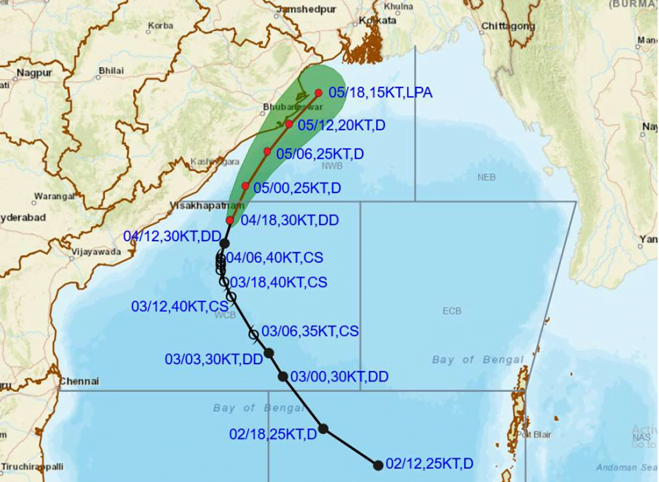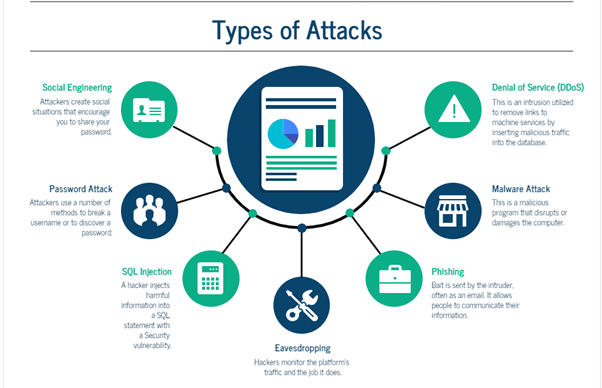IASbaba's Daily Current Affairs Analysis
Archives
(PRELIMS & MAINS Focus)
Open in new window
Syllabus
- Prelims – Environment
In news: A research article titled, ‘Viral spillover risk increases with climate change in High Arctic Lake sediments’, was published in the biological research journal of the UK’s The Royal Society.
What is viral spillover?
- Viruses need to infect a host’s cell in order to replicate.
- These virus/host relationships seem relatively stable within super kingdoms, the major groupings of organisms.
- However, below this rank, viruses may infect a new host from a reservoir host (in which it usually resides) by being able to transmit sustainably in a novel host – a process defined as ‘viral spillover’.
- Climate change leads to shifts in species ranges and distributions, new associations can emerge, bringing in vectors that can mediate viral spillovers.
- The High Arctic zone (regions of Canada within the Arctic Circle such as the Northern islands) could become fertile ground for emerging pandemics.
About the study:
- Researchers collected sediment and soil samples from Lake Hazen in Canada – the largest High-Arctic Lake by volume in the world, and the region’s largest freshwater ecosystem.
- Then they undertook DNA and RNA sequencing to reconstruct the lake area’s virus composition.
- They estimated the spillover risk and found that the chances of a virus moving to a new host increase with runoff from glacier melt caused due to climate change.
- As temperatures increase, the melting of glaciers increases as well, and there is a greater possibility for previously ice-trapped viruses and bacteria to find new hosts.
The result:
- It was found that the risk of viral spillovers increases with changes in the environment at a particular location, driven by global warming.
- As long as viruses and their ‘bridge vectors’ – that act as hosts and lead to their spread – are not simultaneously present in the environment, the likelihood of dramatic events probably remains low.
Source: Indian Express
Previous Year Question
Q.1) Which of the following statements is/are correct (2013)
- Viruses lack enzymes necessary for the generation of energy.
- Viruses can be cultured in any synthetic medium.
- Viruses are transmitted from one organism to another by biological vectors only.
Select the correct answer using the codes given below.
- 1 only
- 2 and 3 only
- 1 and 3 only
- 1, 2 and 3
Open in new window
Syllabus
- Prelims – Current Affairs
In news: German Chancellor Olaf Scholz said Russian President Vladimir Putin was using “energy and hunger” as weapons but his “scorched earth tactics” would not help Russia win the war over Ukraine.
- Ukraine was forced to ask its residents to cut down on electricity usage amid sustained Russian bombing of energy infrastructure.
What are scorched earth tactics:
- The term was first used in 1937 in a report of the Sino-Japanese conflict, and is apparently a translation of Chinese jiāotŭ.”
- Scorched earth tactics form part of a military strategy which seeks to destroy anything that could be of use to the enemy, including energy supplies, bridges, provision stores, agricultural fields, road and railway links, etc.
- The destruction could be carried out by the enemy, or by the retreating army of a country which does not want invaders to use its resources.
- The strategy seeks to deplete the enemy’s resources to sustain warfare, and also break their morale by inflicting heavy hardships on combatants and non-combatants alike.
- Harming civilians as part of this strategy has been banned under the 1977 Geneva Convention.
- Russia has rained missiles on Ukraine’s cities, destroying civilian infrastructure, including power and water supply lines.
Past instances of the technique:
- Scorched earth policy has been part of warfare since ancient times, with the nomad Scythians using the tactics in their war against the Persian Achaemenid Empire led by King Darius the Great (who ruled 522 BCE to 486 BCE).
- The nomadic herders Scythians would hide in the steppes after destroying food supplies and poisoning wells.
- During the American civil war in 1864, Union General William Tecumseh Sherman and his soldiers burnt everything in sight as they marched through Confederate areas. The campaign was known as the March to the Sea.
- In 1915, the Imperial Russian Army, when retreating from the Imperial German Army, destroyed anything that could serve the invaders for more than 600 miles, including crops, railway lines, and dwellings.
- During the Second World War, in 1941, the Russian army again destroyed telegraph networks and electrical and industrial resources when invaded by Germany.
- In India, the armies of Maratha leader Chhatrapati Shivaji were known for their scorched earth tactics. While the Maratha leaders looted and burnt enemy towns, they were under orders to not harm civilians or desecrate religious sites.
Source: Indian Express
Open in new window
Syllabus
- Prelims – Geography
In News: Cyclone Sitrang started landfall along the Bangladesh coast between Barishal and Chattogram, close to Bhola, according to Bangladesh Meteorological Department (BMD).

About:
- Wind speeds around 62 kmph, gusting up to 88 kmph were prevailing in the region — within 54 km of the cyclone centre.
- Due to the high speed of the cyclone, it did not spend much time on the sea to gain wind speed or rainfall.
- Cyclone Sitrang’s landfall happened 9-10 hours before predicted time.
- The eye of the cyclone was somewhere between Khulna and Barisal, and fierce cyclonic winds (above 100 kmph) were prevalent in areas as far off as capital Dhaka.
- The low-lying areas of the coastal districts and their off shore islands and chars are likely to be inundated by the wind driven surge height of 5-8 feet above normal astronomical tide.
- The track of the cyclone as per ECMWF data on Windy is taking it north eastwards into Meghalaya and into Assam. Earlier the track was more towards Tripura, then Assam and Nagaland.
- The system will de intensify as it crosses Bangladesh. But it will bring copious rainfall to all these regions.
Source: Down To Earth
Previous Year Questions
Q.1) Consider the following statements: (2020)
- Jet streams occur in the Northern Hemisphere only.
- Only some cyclones develop an eye.
- The temperature inside the eye of a cyclone is nearly 10°C lesser than that of the surroundings.
Which of the following statements are correct:
- 1 only
- 2 and 3 only
- 2 only
- 1 and 3 only
Q.2) In the South Atlantic and South-Eastern Pacific regions in tropical latitudes, cyclone does not originate. What is the reason? (2015)
- Sea surface temperatures are low
- Inter-Tropical Convergence Zone seldom occurs
- Coriolis force is too weak
- Absence of land in those regions
Open in new window
Syllabus
- Prelims – Science and Technology
In News: IIT Madras, NASA’s Jet Propulsion Lab conduct study regarding the interactions between microbes in the International Space Station (ISS) to help devise strategies for disinfection of space stations and to minimise any potential impact of microbes on the health of astronauts.
- The researchers analysed the microbial sample data taken across three space flights at seven locations on the ISS.
About:
- Klebsiella pneumoniae is a major microbe that resides on the ISS.
- This pathogen has been known to cause pneumonia and other nosocomial infections and may affect the growth of other microbes in the vicinity.
- It is beneficial to various other microbes present on the ISS, especially the bacteria from the Pantoea genus.
- However, it was found that its presence was hampering the growth of Aspergillus fungus.
- This bacterial family includes members like E coli, Salmonella, etc, which are also present in the human gut.
- This bacterial family was found to be the most beneficial among the other microbes present on the ISS.
- The microbial strains found in this study pose no threat to the space station astronauts.
- One of the ways the microbes are introduced in the sealed and closed space station is through crew members.
Significance:
- The microbiome of the built environment has a huge impact on human health. Controlled environments such as the ISS harbour a variety of organisms, and unravelling their interactions is key to a better appreciation of the factors that shape the microbiome even in extreme conditions.
- During spaceflight, crews may have altered immunity and limited access to terrestrial medical facilities. Therefore, studying the microbes inhabiting the space station becomes important to understand the risks associated with short-term and long-term space travel on the health of astronauts.
- This will also open the doors of space travel to the common people and to ensure the travel safer into the sky.
Source: Down to Earth
Open in new window
Syllabus
- Prelims – Environment
Context: Recently, Sandalwood Spike Disease started infecting natural habitats in Karnataka and Kerala. India’s sandalwood trees, particularly of Karnataka are facing a serious threat with the return of the destructive Sandalwood Spike Disease (SSD).
- Presently, there is no option but to cut down and remove the infected tree to prevent the spread of the disease.
About Sandalwood Spike Disease:
- It is an infectious disease which is caused by
- Phytoplasmas are bacterial parasites of plant tissues which are transmitted by insect vectors and involved in plant-to-plant transmission.
- The disease is characterized by a huge reduction in leaf size which is also accompanied by stiffening and reduction of internode length.
- At the advanced stage of the disease, the entire shoot gives the appearance of a spike of the inflorescence.
- There is no cure as of now for the infection.
- Emergence of the disease- The disease was first reported in Kodagu in 1899.
- More than a million sandalwood trees were removed in the Kodagu and Mysuru region between 1903 and 1916 which prompted the Maharaja of Mysuru to announce a reward in 1907 of ₹10,000 for anyone finding a remedy.
- The growing stock had been reduced to 25% of its initial level between 1980 and 2000 in Karnataka.
- Following this, the International Union of Conservation of Nature declared Sandalwood as “Vulnerable” in 1998.
- SSD has been one of the major causes of the decline in sandalwood production in the country for over a century.
- About 1% to 5% of sandalwood trees are lost every year due to the disease, scientists warn that it could wipe out the entire natural population if measures are not taken to prevent its spread.
Reasons for Spread:
- The present rapid spread of the infection is largely due to restrictions on green felling in forests, which has allowed vectors to spread the disease to healthy trees.
- Green felling (silviculture felling) is the felling of green trees of one or more types.
About Sandalwood:
- India has been the traditional leader of sandalwood oil production for perfumery and pharmaceuticals. As early as 1792, Tippu Sultan had declared it a ‘Royal Tree’ of Mysuru.
- Red Saunder/ Red Sandalwood- Found in southern Eastern Ghats Mountain range of South India.
- This tree is valued for the rich red colour of its wood. The wood is not aromatic.
- The International Union for Conservation of Nature (IUCN) has put it under the category of near threatened from earlier endangered species in the Red List.
- It is listed in Appendix II of the Convention on International Trade in Endangered Species of Wild Fauna and Flora (CITES).
- The tree is not to be confused with the aromatic Santalum sandalwood trees that grow natively in South India.
- Red sandalwood has been used for making the bridge and also the neck of the Japanese musical instrument Shamisen and in furniture in China for its porch appearance.
Source: The Hindu
Previous Year Question
Q.1) Which one of the following best describes the term “greenwashing:”? (2022)
- Conveying a false impression that a company’s products are eco-friendly and environmentally sound
- Non-Inclusion of ecological/ environmental costs in the Annual Financial Statements of a country
- Ignoring the disastrous ecological consequences while undertaking infrastructure development
- Making mandatory provisions for environmental costs in a government project/programme
Q.2) If a particular plant species is placed under Schedule VI of The Wildlife Protection Act,
1972, what is the implication? (2020)
- A licence is required to cultivate that plant
- Such a plant cannot be cultivated under any circumstances
- It is a Genetically Modified crop plant
- Such a plant is invasive and harmful to the ecosystem
Open in new window
Syllabus
- Prelims – Geography
Context: Five new varieties of seeds of Basmati rice, developed by a group of scientists led by the Indian Agriculture Research Institute (IARI) Director in 2020 and 2021, are all set to bring revolutionary changes in the way Basmati rice is cultivated in the country.
About Basmati Rice:
- It is one of the best known varieties of rice all across the globe.
- It is long grain rice which has its origin from India and some parts of Pakistan.
- Basmati rice has a unique fragrance and flavour caused due to the presence of a chemical called 2-acetyl-1-pyrroline.
- This chemical is found in basmati rice at about 90 parts per million (ppm) which is 12 times more than non-basmati rice varieties.
- Basmati rice needs specific climatic conditions to grow which is why it is cultivated in selected regions of India.
- India is the largest producer of Basmati rice with about 70 per cent share in global production.
- Basmati rice constitutes one of India’s significant exports both in terms of soft power and hard money.
- It is cultivated in the states of Himachal Pradesh, Punjab, Haryana, Delhi, Uttarakhand, Madhya Pradesh, Jammu and Kashmir and western Uttar Pradesh.
- In May 2010, GI status was given to basmati grown only in Punjab, Haryana, Delhi, Himachal Pradesh, Uttarakhand and parts of western Uttar Pradesh and Jammu & Kashmir.
- Major chunk of India’s basmati rice is exported to Gulf countries viz. Saudi Arabia, Iran, United Arab Emirates, Iraq and Kuwait.
Difference between Basmati and Non-Basmati Rice:
- Basmati is long grain The non-basmati rice comes in all different shapes and sizes – long, slender, short and thick, bead and round.
- Basmati has a characteristic fragrance and flavour while non-basmati varieties, do not have an aroma.
- Basmati is also available in white and brown versions depending on the extent of the milling process. Like wine and cheese, the older basmati gets the better its flavour and aroma. Hence the aged Basmati costs higher than the recent productions.
- Basmati rice becomes almost double its size on cooking. Such a significant increase in size cannot be seen in non-basmati varieties. This makes basmati variety one of the highly demanded rice in the world.
- Yield of Basmati rice from the agricultural land is almost half the non-basmati varieties. This is also one of the reasons for Basmati’s higher costs.
About Indian Agricultural Research Institute (IARI):
- The journey of Indian Agricultural Research Institute (IARI), popularly known as Pusa Institute, began in 1905 at Pusa (Bihar) with the generous grant of 30,000 pounds from an American philanthropist, Mr. Henry Phipps.
- The institute was then known as Agricultural Research Institute (ARI) which functioned with five departments, namely Agriculture, Cattle Breeding, Chemistry, Economic Botany and Mycology. Bacteriology unit was added in 1907.
- The name of ARI was changed to Imperial Institute of Agricultural Research in 1911 and, in 1919 it was renamed as Imperial Agricultural Research Institute. Following a devastating earth quake on 15th January 1934, the institute was shifted to Delhi on 29th July 1936. Post-independence, the institute has been renamed as Indian Agricultural Research Institute (IARI).
- During the fifties, the advancement of scientific disciplines constituted the core program of IARI and provided the base for its fast expansion in the 1960’s and 1970’s. It attained the status of a Deemed University in the year 1958.
- The green revolution that brought smiles to millions of Indians bloomed from the fields of IARI with the development of famous wheat varieties which contributed an estimated one billion tons of addition production.
- As the mother of several ICAR institutions, IARI continues to be the leading institution for agricultural research, education and extension in the country.
- The present campus of the Institute is a self-contained sylvan complex spread over an area of about 500 hectares (approx. 1250 acres) and located about 8 km (5 miles) west of New Delhi Railway Station and about 16 km (10 miles) east of IGI Airport (Palam).
- Currently, the Institute has 20 divisions 5 multi-disciplinary Centres situated in Delhi, 8 regional stations, 2 off-season nurseries, 3 All India coordinated research projects with headquarters at IARI and 10 national Centres functioning under the all India coordinated research projects. It has the sanctioned staff strength of 3540 comprising scientific, technical, administrative and supporting personnel.
Source: The Hindu
Previous Year Question
Q.1) “System of Rice Intensification” of cultivation, in which alternate wetting and drying of rice fields is practiced, results in: (2022)
- Reduced seed requirement
- Reduced methane production
- Reduced electricity consumption
Select the correct answer using the code given below:
- 1 and 2 only
- 2 and 3 only
- 1 and 3 only
- 1, 2 and 3
Open in new window
Syllabus
- Mains – GS 3 Science and Technology
Context:
- As the 21st century advances, a new danger — the cyber threat — is becoming a hydra-headed monster.
- It is hardly confined to any one domain though the military is the one most often touted.
- Rather, it is the civilian sphere where the cyber threat is becoming more all-pervading today and, in turn, a serious menace.
- It is beginning to have a cascading effect with questions being raised on how this would fit in with our belief in, and need for, a well-regulated world order.
About:
- Cyber space is a “superset of interconnected information and communication technology, hardware, software processes, services, data and systems.
- Cyber threats are not confined to merely one set of conflicts but are extending to other conflicts of a varied nature.
- The cyber threat is in this sense all-pervading, embracing many regions and operating on different planes.
- Hence, dealing with the cyber threat calls for both versatility and imaginative thinking.

What are Grey Zone operations:
- ‘Grey Zone Operations’ fall outside traditional concepts of conflicts and have become the new battleground, especially about cyber warfare.
- The grey-zone describes the space in between peace and war in which state and non-state actors engage in competition.
- It includes nefarious economic activities, influence operations, and cyberattacks to mercenary operations, assassinations, and disinformation campaigns.
- The convergence of emerging technologies alongside new hybrid usages, pose several challenges to nations and institutions.
- ‘Grey Zone Operations’ are beginning to be employed to undermine the vitals of a state’s functioning.
India’s assessment:
- With each passing day, we confront a new reality, viz., the extent to which exploitation of cyber space by criminally minded elements undermines our everyday world and beliefs.
- The recent arrest in India, of a Russian for hacking into computers involved in the conduct of examinations for entry into the Indian Institutes of Technology (IITs), is a reflection of how cyber criminals are significantly amplifying their ‘Grey Zone Warfare’ tactics.
- This is, perhaps, the tip of the iceberg for, as a general rule, it takes a long time for the general public to become aware of the nature and consequences of cyber-attacks.
- At first these look like random accidents and it takes sophisticated cyber forensics to understand the contours of such attacks.
- It is worrisome that the perpetrators could succeed in compromising an examination software system deemed to be among the most secure across the world.
- Thus, ‘Grey Zone Warfare’ is set to become the predominant paradigm for the remainder of the century. This adds urgency to erecting proper defences against Grey Zone attacks.
- Distorting the entry-level results of the Joint Entrance Examination is a blow to the nation’s prestige, apart from creating chaos across the board, since entry into higher educational institutions and entry-level jobs in the country is driven by examinations which employ various kinds of technology.
- It significantly raises the bar as far as the intensity and scale of cyber-attacks on other national assets and infrastructure are concerned, with many more of them coming under still more aggravated assaults.
- It has grave implications for the entire spectrum of endeavours that are totally dependent on technologically-driven remote access functioning as a part of their everyday business activity.
- Niche solutions for such cyber intrusions are available (though little known or used) and it is important that those concerned undertake a leap of faith to install such solutions before the situation goes out of control.
Major challenges:
- Not enough attention is being bestowed on the ‘all-encompassing nature’ of the cyber threat.
- Ignored also is the new reality of the ‘weaponization of everything’ which has entered the vocabulary of threats.
- The latter clearly demands a ‘proto-revolutionary’ outlook on the part of policymakers, which is evidently lacking.
- Lost in translation is also the nature of today’s weapon of choice, viz., cyber.
- This lack of awareness is unfortunate at a time when states clearly lack the necessary resilience to face a variety of multi-vector threats.
- Cyber space is essentially a locus of geo-political conflict — the Russia-Ukraine crisis being an instance.
- In the case of the Russia-Ukraine war, cyber space has become an experiment for various players to try and support a weaker nation against a more powerful opponent, through distortion of information and communication flows, which are considered essential to the success or failure of any war strategy.
- Additionally, distortion by private players of the concept of ‘the information super highway’ casts a dark shadow over the entire current systems of belief, providing a great deal of fuel for thought — more specifically when such influences turn out to be fake or distorted.
- The Cambridge Analytica scandal erupted over the issue of its becoming involved in elections.
- Similar suspicions again surfaced regarding Facebook’s manipulation of personal data.
Historical Evolution:
- Indian cyberspace was born in 1975 with the establishment of National Informatics Centre (NIC) with an aim to provide govt with IT solutions.
- Three networks (NWs) were set up between 1986 and 1988 to connect various agencies of govt.
- These NWs were, INDONET which connected the IBM mainframe installations that made up India’s computer infrastructure, NICNET (the NIC NW) a nationwide very small aperture terminal (VSAT) NW for public sector organisations as well as to connect the central govt with the state govts and district administrations, the third NW setup was ERNET (the Education and Research Network), to serve the academic and research communities.
- New Internet Policy of 1998 paved the way for services from multiple Internet service providers (ISPs) and gave boost to the Internet user base grow from 1.4 million in 1999 to over 150 million by Dec 2012.
- Exponential growth rate is attributed to increasing Internet access through mobile phones and tablets.
Cyberspace governance in India:
- India is among the first developing countries to criminalize cybercrimes by enacting the IT Act in 2000.
- IT (Amendment) Act 2008, added specific provisions to deal with and punish cyber-offenses such as publication of sexually explicit material, cyber-terrorism, Wi-Fi hacking, child pornography, identity theft, and spam.
- Right to privacy has been recognized as a fundamental right.
- Further, in 2013, the Supreme Court issued an interim order, ruling that people cannot be required to have the Aadhaar identification in order to collect state subsidies.
- The country’s regulatory bodies overseeing various markets have also issued guidelines, best practises and regulations to monitor and control cybersecurity activities. For instance, India does not have data breach disclosure laws. However, the central bank, RBI has asked banks and financial institutions in the country to share information on data breach.
- Similarly, in 2017, the Insurance Regulatory and Development Authority of India (IRDAI) has issued guideline, which require all insurance companies in the country to appoint a Chief Information Security Officer (CISO).
Government initiatives:
- Aadhaar provides unique identity, promises to eliminate duplicate and fake identities through effective verification and authentication. Many of the govt’s social benefit programs are linked with the Aadhaar number.
- Digital India a is a flagship programme of the Government of India with a vision to transform India into a digitally empowered society and knowledge economy.
- JAM Trinity (short for Jan Dhan-Aadhaar-Mobile) refers to the government of India initiative to link Jan Dhan accounts, mobile numbers and Aadhaar cards of Indians to plug the leakages of government subsidies.
- The BharatNet project is the world’s largest rural broadband connectivity project aimed to provide connectivity to all the 2.5 lakhs gram panchayats across the country.
- Financial inclusion through the Pradhan Mantri Jan-Dhan Yojana
- RuPay is an Indian multinational financial services and payment service system, conceived and launched by the National Payments Corporation of India (NPCI) to fulfil RBI’s vision of establishing a domestic, open and multilateral system of payments.
- An indigenously-developed and exportable digital infrastructure called IndiaStack.
- Cyber Surakshit Bharat
- The Indian Computer Emergency Response Team (CERT-In)
- National Critical Information Infrastructure Protection Centre (NCIIPC)
Way forward:
- Hence, it is evident that the cyber realm is no longer confined to events such as the Russia-Ukraine war and the battle is now in our own backyards, with several non-state actors engaging in hybrid warfare and distorting day-to-day practices, including examinations.
- These pose legal, ethical and real dilemmas. Left unchecked, the world may have to confront a new kind of Wild West, before states find a common denominator for regulating cyber space and lay down proper rules and practices to prevent anarchy and chaos.
Source: The Hindu
Open in new window
Syllabus
- Prelims – Environment
- Mains – GS 2 (Governance) and GS 3 (Environment)
Context: The monsoon has receded, and North India is bracing for a smoggy winter. And with that the feverish focus on crop stubble burning has returned to India’s public discourse.
- Like each year, discussions have begun on how bad this year’s stubble burning season will likely be and what potential ad hoc techno-fixes could solve the issue — in the short term.
About Stubble Burning:
- Stubble (parali) burning is a method of removing paddy crop residues from the field to sow wheat from the last week of September to November. Stubble burning is a process of setting on fire the straw stubble, left after the harvesting of grains, like paddy, wheat, etc. It is usually required in areas that use the combined harvesting method which leaves crop residue behind.
- The process of burning farm residue is one of the major causes of air pollution in parts of north India, deteriorating the air quality.
- Along with vehicular emissions, it affects the Air Quality Index (AQI) in the national capital and NCR. Stubble burning by farmers in Haryana, western Uttar Pradesh and Punjab in north India is considered a major cause of air pollution in Delhi and its adjoining regions.
- Paddy stubble burning is practised mainly in the Indo-Gangetic plains of Punjab, Haryana, and UP to clear the fields for rabi crop sowing.
Why this problem of stubble burning occurs?
Crop duopoly:
- The root cause of stubble burning can be traced back to the 1960s-70s, when to meet the urgent challenge of feeding its rapidly growing population, India introduced several measures as part of its Green Revolution.
- The Green Revolution transformed the way agriculture was practised, especially in Punjab and Haryana. The economics of high-yielding varieties of paddy and wheat, supported by a guaranteed buyer (the government)and minimum support prices led to a crop duopoly oriented solely around increasing caloric intakes, supplanting the earlier diversity of crops grown in the region.
Introduction of subsidies:
- Further policy moves in subsequent decades, which included the introduction of subsidies for electricity and fertilizers, and ease of access for credit in agriculture only served to cement this duopoly.
Government policy:
- In an attempt to address the growing water crisis, the Punjab and Haryana governments introduced laws around water conservation, encouraging farmers to look to the monsoon rather than groundwater to irrigate their crops.
- The shortened harvesting season that arose resulting from a not clearly thought-out policy move brought about the need for farmers to rapidly clear their fields between the kharif and rabi crops; the quickest of these ways was to burn off the remaining stubble post-harvest.
Government Interventions to reduce crop residue burning:
Banning Crop Residue Burning:
- Crop residue burning was notified as an offence under the Air Act of 1981, the Code of Criminal Procedure, 1973 and various appropriate Acts.
- In addition, a penalty is being imposed on any offending farmer. Village and block-level administrative officials are being used for enforcement.
Establishment of a Marketplace for Crop Residue:
- Efforts are being made to increase the avenues for the alternate usage of paddy straw and other crop residue. For instance, paddy straw has a considerable calorific value, making it suitable for use as a fuel in biomass based power plants.
- Similarly, it can be utilised for the preparation of bio-fuels, organic fertilisers and in paper and cardboard making industries. The strategy, broadly, is to assign a real economic and commercial value to the agricultural residue and making burning it an economic loss to the farmer.
Public Awareness Campaigns:
- There are ongoing efforts to highlight the health effects of crop residue burning. It produces extremely high levels of toxic particulates, which affect the health of the people in the direct vicinity of the burning.
- In addition, efforts are also being made through kisan camps, trainings and workshops, apart from campaigns through various print media, televised shows and radio telecast, in informing farmers about the alternative usage of crop residue.
Subsidy on Agri-implements:
- The state governments, in collaboration with the Centre, has rolled out schemes for providing subsidy on mechanical implements that help tillage of soil, so that the crop residue can be retained in the soil, adding to its fertility, or alternately, collection of crop residue for putting it to commercial usage.
Crop Diversification:
- There are various ongoing, long-term efforts at diversification of cropping techniques, such that crop residue burning can be effectively prevented. This is being attempted through cultivation of alternate crops (apart from rice/paddy and wheat) that produce less crop residue and have greater gap periods between cropping cycles.
Pusa Decomposer:
- Pusa Decomposer, a microbial consortium of fungal species (both in liquid and capsule forms) developed by ICAR, has been found effective for rapid in-situ decomposition of paddy straw.
- The decomposers are in the form of capsules made by extracting fungi strains that help the paddy straw to decompose at a much faster rate than usual.
- It involves making a liquid formulation using decomposer capsules and fermenting it over 8-10 days and then spraying the mixture on fields with crop stubble to ensure speedy bio-decomposition of the stubble.
- It takes around 20 days for the degradation process to be completed.
- It does not give enough time for farmers to prepare fields for the wheat crop on time.
Crop Residue Management:
- The Centre introduced the Crop Residue Management (CRM) scheme in 2018-19, under which financial assistance @ 50 per cent is provided to the farmers for purchase of CRM machinery and @ 80 per cent to Cooperative Societies, FPOs and Panchayats for establishment of CHCs.
- The scheme promotes usage of machines such as Super Straw Management Systems, Happy Seeder, Super Seeder, Smart Seeder, zero till seed-cum-fertiliser drill, Mulcher, Paddy Straw Chopper, hydraulically reversible mould board plough, crop reapers and reaper binders.
Way Forward:
- More recently, however, with concerted focus on the subject, a series of short-term ex-situ and in-situ solutions have been rolled out by the Union and State governments.
- Economic incentives to reduce burning have also been tested with limited success. With crores invested in these solutions over the last five years, we have yet to see any significant improvement in the situation.
- Driven largely by short-term thinking, these techno-fixes or alternative uses work at the margins, without addressing the root cause.
- The entire value-chain of agriculture in the region needs to change if air quality, water, nutrition, and climate goals are to be addressed.
- In practical terms, this means substantially reducing the amount of paddy being grown in the region and replacing it with other crops that are equally high-yielding, in-demand, and agro-ecologically suitable such as cotton, maize, pulses and oil seeds.
- It will also require building trust with farmers to ensure they are seen as partners (rather than perpetrators) and providing them the financial support necessary.
- At a policy level, it also requires recognising that agriculture, nutrition, water, the environment, and the economy are all deeply intertwined in the era of the Anthropocene. One cannot be addressed in a silo without having second and third order effects on the other.
Therefore, taking the long view on this would also mean establishing a mechanism for intersectoral policymaking that aligns our goals for sectorial policy within the broad frame of sustainable development we wish to follow.
Source: The Hindu
Open in new window
Syllabus
- Prelims – International Relations
- Mains – GS 2 (International Relations)
Context: The union home minister recently addressed the concluding session of the 90th INTERPOL General Assembly. This session was hosted by India in New Delhi.
About the Interpol:
- Its full name is the International Criminal Police Organisation and is an intergovernmental organisation.
- It has 195 member countries and it helps police in all of them to work together to make the world a safer place.
- It is headquartered in Lyon, France.
- INTERPOL’s Centenary:
- In 2023, INTERPOL will celebrate 100 years since the founding of the International Criminal Police Commission, which then became INTERPOL in 1956.
- INTERPOL NCB:
- In each country, an INTERPOL National Central Bureau (NCB) provides the central point of contact for the General Secretariat and other NCBs.
- An NCB is run by national police officials and usually sits in the government ministry responsible for policing.
- The Central Bureau of Investigation (CBI) is designated as the National Central Bureau of India.
- INTERPOL agencies in India:
- The Interpol nodal agency in India is the CBI, but the counterterror agency is the National Investigation Agency.
- While the latter functions under the Ministry of Home Affairs, the former is under the Prime Minister’s Office.
- The General Assembly:
- The General Assembly is INTERPOL’s supreme governing body and comprises delegates appointed by the governments of our member countries.
- It meets once a year and takes all the major decisions affecting general policy, the resources needed for international cooperation, working methods, finances and programmes of activities.
- These decisions are in the form of resolutions.
- Executive Committee Elections:
- The General Assembly elects new members to the Executive Committee as the incumbents end their mandate.
- INTERPOL’s Global Crime Trends Report:
- This document provides member countries with an overview of the main crime threats in the world.

India’s recommendations for INTERPOL
Setting up of permanent platforms:
- India recommended to Interpol that setting up permanent counter-terrorism and anti-narcotics real-time information exchange platforms.
- These platforms would further strengthen the coordination and sustained action by the member countries against the global menaces.
- For a united response,
- India is also committed to extending all possible technical and manpower assistance to the global police organisation in this regard.
- A similar approach was required to ensure effective action against the international drug trafficking networks, for which
- Deeper cooperation among the countries,
- Intelligence-based operations,
- Regional maritime security accords and
- Efficient anti-money laundering system were also essential.
Good and bad terrorism:
- Describing terrorism as the worst form of human rights violation, the Home Minister said a general consensus would have to be developed on the definitions of “terrorism” and “terrorist”.
- The narratives of “good” and “bad” terrorism and “small” and “big” terrorism would weaken the fight against the threat which was high on Interpol’s priority list.
Plan of Action:
- Union home minister also suggested that Interpol prepare a plan for the next 50 years on the basis of its experience and achievements of the past 100 years.
India’s efforts in combating crimes:
- Establishment of National Forensic Science University; an inter-operable criminal justice system; and linking of e-courts, e-prisons, e-forensics and e-prosecution with the Crime and Criminal Tracking Network and Systems.
- The Indian government has also decided to create a national database on crimes such as terrorism, narcotics and economic offences.
- India has established the Indian Cyber Crime Coordination Centre, I4C, to combat cyber-crime in a comprehensive manner.
Terrorism and Pakistan:
- An offence to intimidate a population or to compel a government or an international organisation to do or abstain from doing any act, which causes:
- Death or serious bodily injury to any person.
- Serious damage to public or private property, including a place of public use, a State or government facility, a public transportation system, an infrastructure facility or the environment.
- Damage to property, places, facilities, or systems resulting in or likely to result in a major economic loss.
- It encompasses a range of complex threats like organized terrorism in conflict zones, foreign terrorist fighters, radicalised ‘lone wolves’, etc.
- Factors Responsible for Growth of Terrorism:
- State-sponsorship and safe havens.
- State-of-the-art communication systems.
- Access to advanced technology.
- Networking of terrorist groups with the criminal underworld.
- Pakistan’s ‘good’ and ‘bad’ terrorists: Pakistan’s stand:
- Pakistan’s Army General in one of his speeches stated that as far as his country, army and ISI are concerned, there are clearly ‘good and bad’ terrorists.
- He stated that Pakistan was a victim of ‘bad terrorists’, implying terrorism emanating from Afghanistan.
- Without naming India, he added that Islamabad supports ‘good terrorism’ if it is against any country, it considers oppressive.
- In his opinion, India is an oppressive force in Kashmir. Thus, he officially admitted that Pakistan does support terror groups operating against India.
- Realistically for Pakistan, the more it attempts to follow good versus bad terror, the more it would face destabilisation.
Interpol’s Future Challenges:
- The rising spectre of transnational, cyber and organised crime requires a globally coordinated law enforcement response.
- Interpol has a legacy of trust and reliability. It needs to acquire powers of sanction against a country which refuses to cooperate in implementing a red notice. It is however highly unlikely that member-nations will ever agree to dilute their sovereignty and invest the Interpol with such authority.
Way Forward:
- Beyond databases and tools: Interpol is required now to articulate an expansion beyond its databases and tools.
- Real-time dissemination of information: The success of its secure i-24 for 24/7 information sharing aside, the importance of real-time dissemination of information should gain primacy.
- Equitable significance: should be accorded to the legitimate interests of growing economies pursuing democratic charters.
- Demographic dividend: A large and young technology-oriented workforce in startups can be utilized for upgrading the security architecture.
- Interpol and law enforcement agencies of member nations: They must endeavour to build, maintain and operate a people-centric ecosystem to meet the evolving challenges.
Source: The Hindu
Open in new window
Syllabus
- Prelims – Ancient History
- Mains – GS 1 (History and Art and Culture)
Context: Recently, the Prime Minister reviewed the construction of the National Maritime Heritage Complex (NMHC) site at Gujarat’s Lothal via video conferencing.

National Maritime Heritage Complex:
- Genesis and Cost: The project began in March 2022 and is being developed at a cost of Rs 3,500 crore.
- Innovative features:
- Lothal mini-recreation-which will recreate Harappan architecture and lifestyle through immersive technology
- Four theme parks – Memorial theme park, Maritime and Navy theme park, Climate theme park, and Adventure and Amusement theme park.
- The world’s tallest lighthouse museum will be housed by the complex.
- India’s maritime heritage from the Harappan time till today, will be highlighted by the 14 galleries.
- A coastal states pavilion will display the diverse maritime heritage of Indian states and UTs.
About Lothal:
- The port city is believed to have been built in 2,200 BC.
- It was located in the Bhil region of what is now the state of Gujarat.
- Lothal was a major trading centre of the Indus Valley Civilisation (IVC).
- It was a symbol of India’s maritime power and prosperity, as its trade of beads, gems and ornaments reached West Asia and Africa.
- The meaning of Lothal (a combination of Loth and (s) thal) in Gujarati is “the mound of the dead”.
- Incidentally, the name of the city of Mohenjo-daro (also part of the Indus Valley Civilisation, now in Pakistan) means the same in Sindhi.
Discovery of Lothal:
- The search for cities of the Harappan Civilisation was started by the Indian archaeologists post-1947 in Gujarat’s Saurashtra.
- A team led by Archaeologist SR Rao discovered a number of Harappan sites including the port city of Lothal.
- Excavation work was carried out in Lothal between February 1955 and May 1960.
- The Archaeological Survey of India (ASI) reports that Lothal had the world’s earliest known dock connecting the city to an ancient course of the Sabarmati River.
- The National Institute of Oceanography in Goa discovered marine microfossils along with the salt, gypsum crystals at the Lothal site.
- It indicates that sea water once filled the structure and it was definitely a dockyard.
- In later excavations, ASI unearthed a mound, a township, a marketplace, and the dock.
- The archaeological site museum stands adjacent to the excavated areas. It displays some of the most prominent collections of Indus-era antiquities in India.
Additional excavation findings about Lothal:
- Division of the Lothal city into citadel (upper town) and lower town shows existence of social/class differentiation in Harappan society.
- Planned urbanization: Paved baths, civic amenities, drainage and water facilities, well planned streets etc.
- Seals: Lothal holds the third largest collection of seals and sealings, engraved on steatite, with animal and human figurines and undeciphered letters from the Indus script.
- These seals give ideas of material and cultural values, worship of fire and sea goddess etc.

- Variety of burial methods.

- Beads: Lothal was famous for micro-beads that were made by rolling ground steatite paste on string, baking it solid and cutting with a tiny saw into the desired lengths.
- Weights and Tools: Harappan culture represented a standardized and precise system of weights and measures, which is reflected in the local materials at Lothal.
- For example, beautiful designs of human and animal figurines.
- Pottery and earthenware:

Significance of Lothal:
- Lothal was nominated as a UNESCO World Heritage Site in April 2014 but its application is pending on the tentative list of UNESCO.
- The excavated site of Lothal is the only port-town of the Indus Valley Civilisation.
- Town Planning: Lothal was a metropolis with an upper and a lower town and on its northern side a basin with vertical wall, inlet and outlet channels which has been identified as a tidal dockyard.
- Satellite images show the river channel (now dried), would have brought in considerable volume of water during high tide, which would have filled the basin and facilitated sailing of boats upstream.
- Port Functioning: The remains of stone anchors, marine shells, sealings which trace its source in the Persian Gulf; together with the structure identified as a warehouse further aids the comprehension of the functioning of the port.
- Heritage value of the Lothal is comparable to other ancient port-towns around the world like- Xel Ha (Peru), Ostia (Port of Rome) and Carthage (Port of Tunis) in Italy, Hepu in China, Canopus in Egypt, Gabel (Byblos of the Phoenicians), Jaffa in Israel, Ur in Mesopotamia, Hoi An in Vietnam etc.
- Regional Comparison: In the region, it can be compared with other Indus port towns of Balakot (Pakistan), Khirasa (in Gujarat’s Kutch) and Kuntasi (in Rajkot).
Way Forward:
- The National Maritime Heritage Complex (NMHC) at Lothal will act as a centre for learning and understanding India’s maritime history.
- The NMHC is being developed with the aim of displaying India’s diverse maritime heritage.
- It will also help Lothal emerge as a world-class international tourist destination.
Source: Indian Express
Previous Year Question
Q.1) Which one of the following ancient towns is well known for its elaborate system of water harvesting and management by building a series of dams and channelising water into connected reservoirs? (2021)
- Dholavira
- Kalibangan
- Rakhigarhi
- Ropar
Baba’s Explainer – India’s uphill battle to bring down air pollution
Syllabus
- GS-3: Environmental Conservation: Air Pollution
Context: Air quality in Delhi and adjoining regions has slumped ahead of winter, and the bountiful rains in October has merely delayed the inevitable.
- AQI has turned either ‘poor’ or ‘severe’ in many parts of Delhi.
- The Commission for Air Quality Management has instructed industries and construction and demolition sites to follow its directives over the next few days.
- Also, all citizens must follow a Graded Response Action Plan (Grap).
Read Complete Details on India’s uphill battle to bring down air pollution
Daily Practice MCQs
Q.1) Which one of the following is not a Harappan site?
- Lothal
- Kalibangan
- Sanchi
- Rakhigarhi
Q.2) With respect to Lake Hazen, consider the following statements:
- It is located in Greenland.
- It is the largest High-Arctic Lake in the world.
- It is a saltwater lake.
Which of the above are correct?
- 1 and 2 only
- 2 only
- 2 and 3 only
- 1, 2 and 3
Q.3) In context of ‘Scorched-Earth’ tactics, which of the following statements is correct:
- cyber-attacks tactics to breach information
- weapons to incapacitate enemy satellites
- electrostatic separation of rare earth metals
- bombing of energy infrastructure
Comment the answers to the above questions in the comment section below!!
ANSWERS FOR ’25th October 2022 – Daily Practice MCQs’ will be updated along with tomorrow’s Daily Current Affairs.st
ANSWERS FOR 22nd October – Daily Practice MCQs
Q.1) – b
Q.2) – d
Q.3) – c















